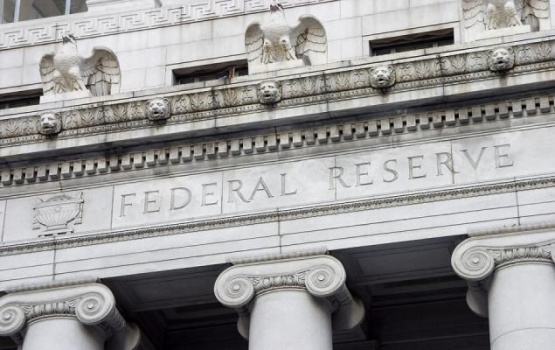Fed Interest Rate Cut on the Horizon: What it Means for Banks

The Federal Reserve seems to be poised for the
first interest rate cut since 2008, when the financial markets and
the U.S. economy collapsed. This is a stark change in position for
the central bank, which raised rates four times last year and
maintained a “patient†stance earlier this year.
The Fed chair, Jerome Powell, in the news conference at the end of
two day FOMC meeting earlier this week, said that a clear picture
on whether the economy requires easing monetarypolicy is expected
“in the very near term.’’
Markets seem to have already factored in that the Fed will cut
rates at its July meeting. Per the CME Group FedWatch tool, the
odds of a 25 basis point cut in interest rates in July are now
almost 72%, a jump from nearly 15% a month ago.
Moreover, a survey of the 17 Fed officials reflect that nearly 50%
expect at least one rate cut this year, while seven project two
cuts.
This time, the Fed officials kept the key interest rate in the
2.25-2.50% range, while stating that “uncertainties about this
outlook have increased. In light of these uncertainties and muted
inflation pressures, the Committee will closely monitor the
implications of incoming information for the economic outlook and
will act as appropriate to sustain the expansion.â€
Trade Worries
Officials acknowledged that the country’s trade policy is creating
significant uncertainties, specially the worsening trade war with
China. Since the Fed’s last policy meeting in May, trade war
concerns have heightened as new tariffs on $200 billion worth of
Chinese imports were introduced and trade talks collapsed. Though
efforts are on to end the impasse, it is expected to take
time.
Further, the Trump administration has plans to impose tariffs on
Mexico, and has given Japan and Europe about six months to reach a
trade agreement with the United States or face tariffs in the auto
sector. All these factors have increased uncertainty among
companies, leading to slowdown in factory production and moderating
job growth.
Additionally, in its post-meeting statement, Fed officials
indicated “that economic activity is rising at a moderate†pace, a
downgrade from a “solid†rate that the Fed used at its last meeting
statement. Nevertheless, the officials still expect economy to grow
at the rate of 2.1% in 2019 and 2% in 2020.
Inflation Concern
Muted inflation is another cause of concern for the Fed. The
central bank has failed to hit its 2% inflation target for quite a
long time and the expectation of rise in inflation has fallen
recently. Even the Fed officials have lowered the target to 1.5%
from 1.8% in March.
This is the second time that the inflation target has been lowered.
Earlier in March, it was lowered from 1.9% announced in December
2018.
In the post-meeting statement, Fed officials stated “On a 12-month
basis, overall inflation and inflation for items other than food
and energy are running below 2 percent. Market-based measures of
inflation compensation have declined; survey-based measures of
longer-term inflation expectations are little changed.â€
Impact on Banks
Banks thrive in therising rate environment. So, cut in interest
rates will place banks in the most disadvantageous position.
Banks seek to borrow money at short-term rates and lend at
long-term rates. If interest rates decline, they will earn less on
lending. This would compress net interest margins and hurt
bottom-line growth.
Hence, almost all the banks, big and small, including JPMorgan JPM,
Bank of America BAC, BB&T Corp. BBT and Zions Bancorporation
ZION will be adversely impacted by lower interest rates.
Also, yield curve inversion, (which has already occurred a few
times over the past six months) seen as a warning of an impending
economic slowdown or even recession, will hurt banks’
financials.
Banks earn net interest income (NII) by charging borrowers higher
long-term interest rates while doling out smaller interest rates to
depositors. As the yield curve inverts and the spreads between
short-and long-term rates narrows, growth in banks’ NII is expected
to get hampered.
Another concern, though not directly related to the Fed rate cut,
is slowdown in the global economy. This will hurt loan growth as
demand is likely to remain muted.
Banks’ financials, which depend on the health of the economy, will
be hurt. So, banks’ earnings, which have remained at record levels
amid improving economy and higher interest rates, are likely to be
affected.
While big banks might be able to overcome this challenging
environment given their global operations and diversified revenue
streams, smaller domestic banks like Commerce Bancshares, Inc.
CBSH, Huntington Bancshares Incorporated HBAN, Zions and
Cullen/Frost Bankers, Inc. CFR will likely be more adversely
impacted.
Nonetheless, cost savings and streamlining efforts, conservative
loan policy, technology advancement and focus on improving other
revenue sources are expected to support banks’ financials to some
extent. Also, these should aid in overcoming the impending
downturn.
Today's Best Stocks from Zacks
Would you like to see the updated picks from our best
market-beating strategies? From 2017 through 2018, while the
S&P 500 gained +15.8%, five of our screens returned +38.0%,
+61.3%, +61.6%, +68.1%, and +98.3%.
This outperformance has not just been a recent phenomenon. From
2000 – 2018, while the S&P averaged +4.8% per year, our top
strategies averaged up to +56.2% per year.
See their latest picks free >>
Want the latest recommendations from Zacks Investment Research?
Today, you can download 7 Best Stocks for the Next 30 Days.
Click to get this free
report
JPMorgan Chase & Co.
(JPM) : Free Stock Analysis Report
Bank of America Corporation
(BAC) : Free Stock Analysis Report
BB&T Corporation (BBT)
: Free Stock Analysis Report
Commerce Bancshares, Inc.
(CBSH) : Free Stock Analysis Report
Huntington Bancshares
Incorporated (HBAN) : Free Stock Analysis Report
Cullen/Frost Bankers, Inc.
(CFR) : Free Stock Analysis Report
Zions Bancorporation (ZION)
: Free Stock Analysis Report
To read this article on
Zacks.com click here.
Zacks Investment Research